Find Out the Easiest Way to Avoid Buying ‘Spaghetti Chicken’
Imagine you’ve just cooked dinner: Chewy but firm noodles, still a little wet, are sitting in your pan—and you’re panicking. Why? Because you’re not cooking spaghetti—you were planning on eating a chicken’s flesh. Why does my chicken breast look like noodles? Since 2015, reports of “spaghetti meat” chicken breasts have flooded the internet. But what exactly is “spaghetti chicken,” and is it OK to eat? Find out why chicken flesh is getting “spaghettified” and what you can do to avoid having “spaghetti chicken” on your plate.
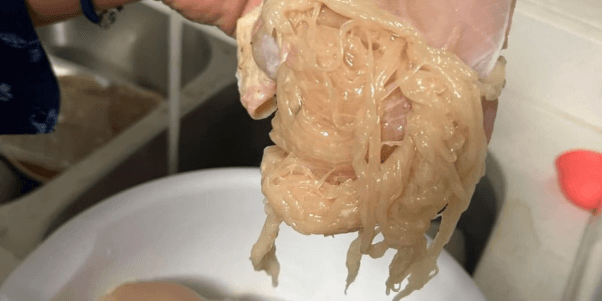
What Is ‘Spaghetti Chicken’ Breast?
When you see “spaghetti chicken,” think “painfully crippled chicken,” because the meat industry’s manipulation of chickens’ bodies to grow unnaturally large has caused roughly 5% to 7% of the 8 billion chickens killed for their flesh in the U.S. each year to have stringy, spaghetti-like pectoral muscle fibers.
Breeding and drugging chickens to grow so large so quickly that their legs and organs can’t keep up not only results in muscle damage that appears as “spaghetti meat,” “woody chicken breast,” or green chicken flesh but also causes the birds to suffer from the following health problems:
- Heart attacks
- Organ failure
- Crippling leg deformities
Many hens become crippled under their own weight and eventually die because they can’t reach water nozzles.
Is Stringy Chicken Breast OK to Eat?
“Spaghetti chicken” breast is never OK to eat. Chickens are capable of feeling pain, grief, love, joy, anxiety, and a whole range of other emotions, just like humans.
When these birds are permitted to engage in their natural behavior, they are social and like to spend their days together, scratching for food, taking dust baths, roosting in trees, and lying in the sun. But chickens are arguably the most abused animals on the planet—and most of those raised in the U.S. don’t get to enjoy anything that’s natural or important to them.
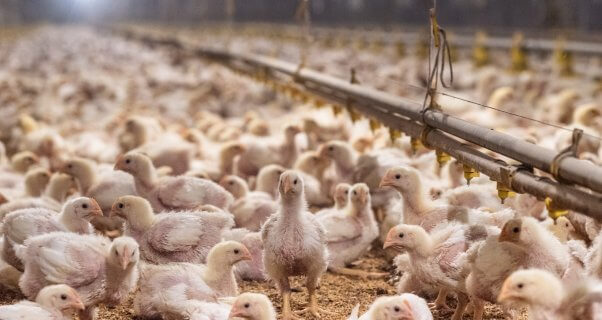
Almost all chickens raised for their flesh in the U.S., called “broilers” by the speciesist chicken industry, spend their entire lives in filthy sheds with tens of thousands of other birds, and the intense crowding and confinement often lead to outbreaks of disease, such as bird flu.
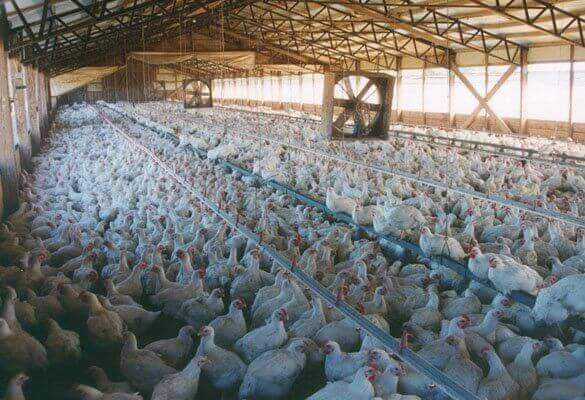
When the birds are only 6 or 7 weeks old, workers cram them into cages and truck them to slaughter.
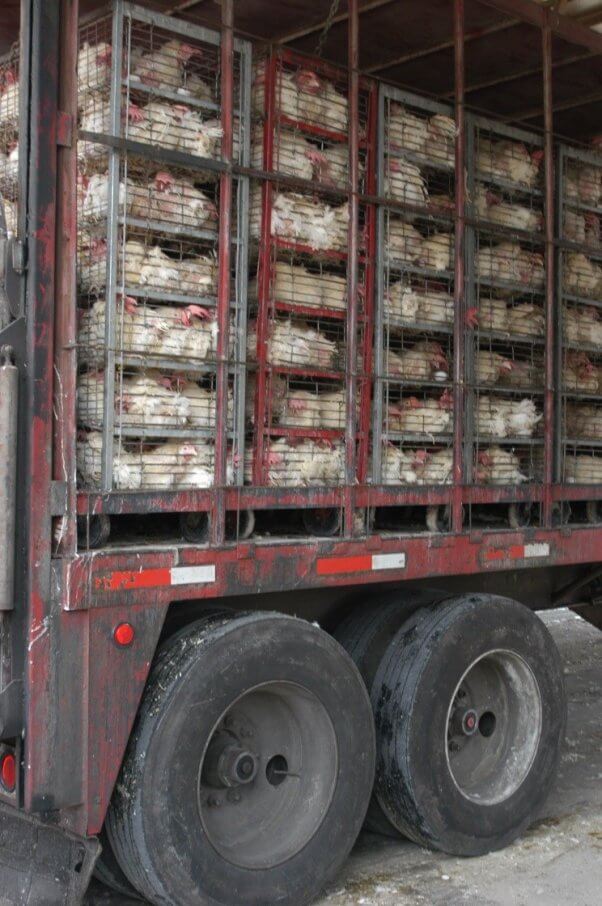
Those who survive the journey are shackled and hung upside down by slaughterhouse workers. who then send them through an electrified water bath intended, but often failing, to stun them, and many are still conscious when their throats are slit and they’re scalded to death in defeathering tanks.
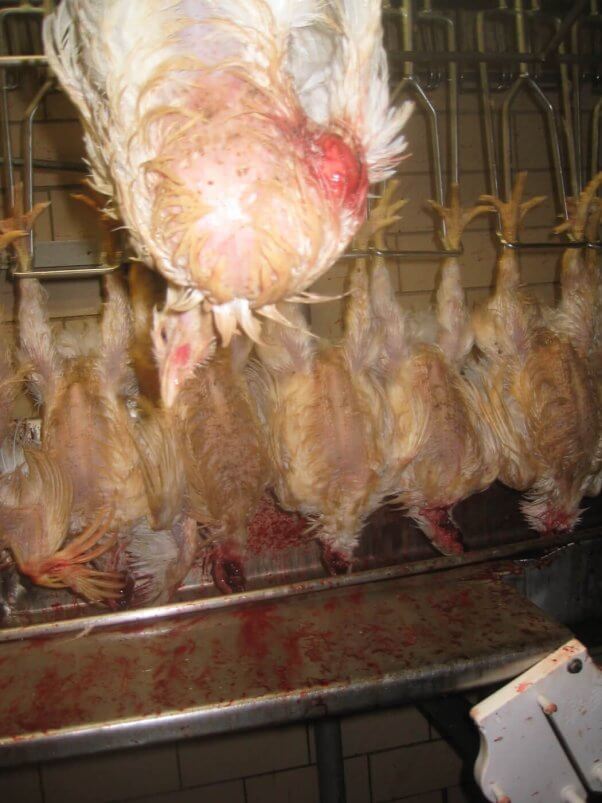
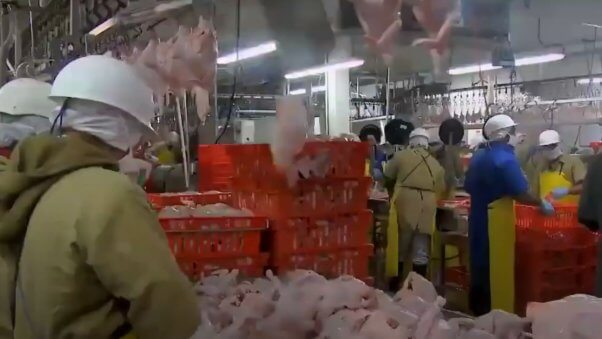
What About ‘Humane’ Labels Like ‘Cage-Free’ and ‘Free-Range’?
Many companies slap misleading labels touting compassion on the same cruelly sourced products they’ve sold for decades. This is known as humane washing, and it’s a marketing ploy meant to deceive consumers into believing they’re making kind choices when they actually haven’t. There’s no compassionate way to obtain chicken flesh.
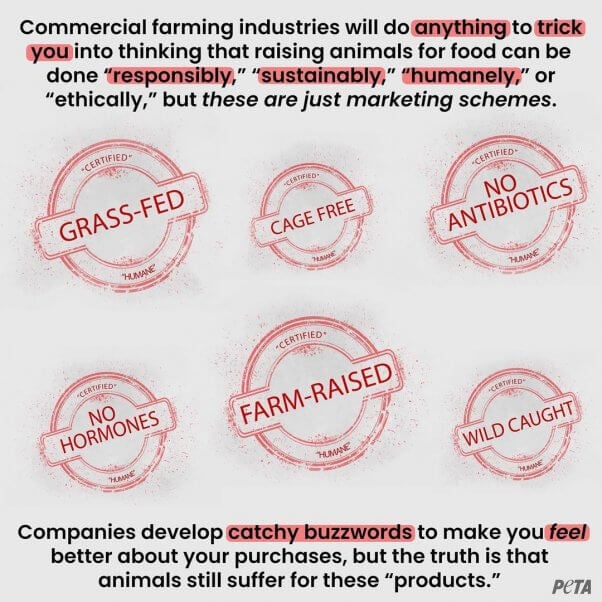
What About Eggs From ‘Cage-Free’ Chickens?
The egg industry tries to deceive consumers through humane washing just as the meat industry does in an attempt to hide facts such as the following:
- Hens are confined to severely crowded warehouses.
- The tips of chicks’ beaks are commonly burned or cut off.
- Up to 86% of hens used in “cage-free” egg production have broken bones.
- All male chicks are killed—often by being ground up while they’re still alive or thrown into the trash to suffocate—because they’re considered useless.
How to Avoid ‘Spaghetti Meat’ Chicken Breasts
It’s easy to avoid “spaghetti meat” chicken: If you buy only vegan chicken, you won’t end up with a dead animal’s stringy muscle fibers on your plate, and you’ll be able to enjoy your meal knowing that no birds suffered for it. Your takeaway order or shopping cart shouldn’t have heads, wings, breasts, or thighs in it. Chickens need their body parts,—and humans don’t!
Finding out about “spaghetti meat” isn’t the first time that the animal-eating side of the internet has been shocked to find animal body parts in their order of… animal body parts: There’s been a chicken head in an order of chickens’ wings, a “zombie” chicken carcass, a frozen duck head—these viral anecdotes serve as dramatic reminders that no one wants to be killed for food. If you’re tired of finding body parts in your food, there’s only one thing to do: Go vegan!

